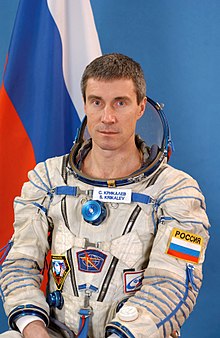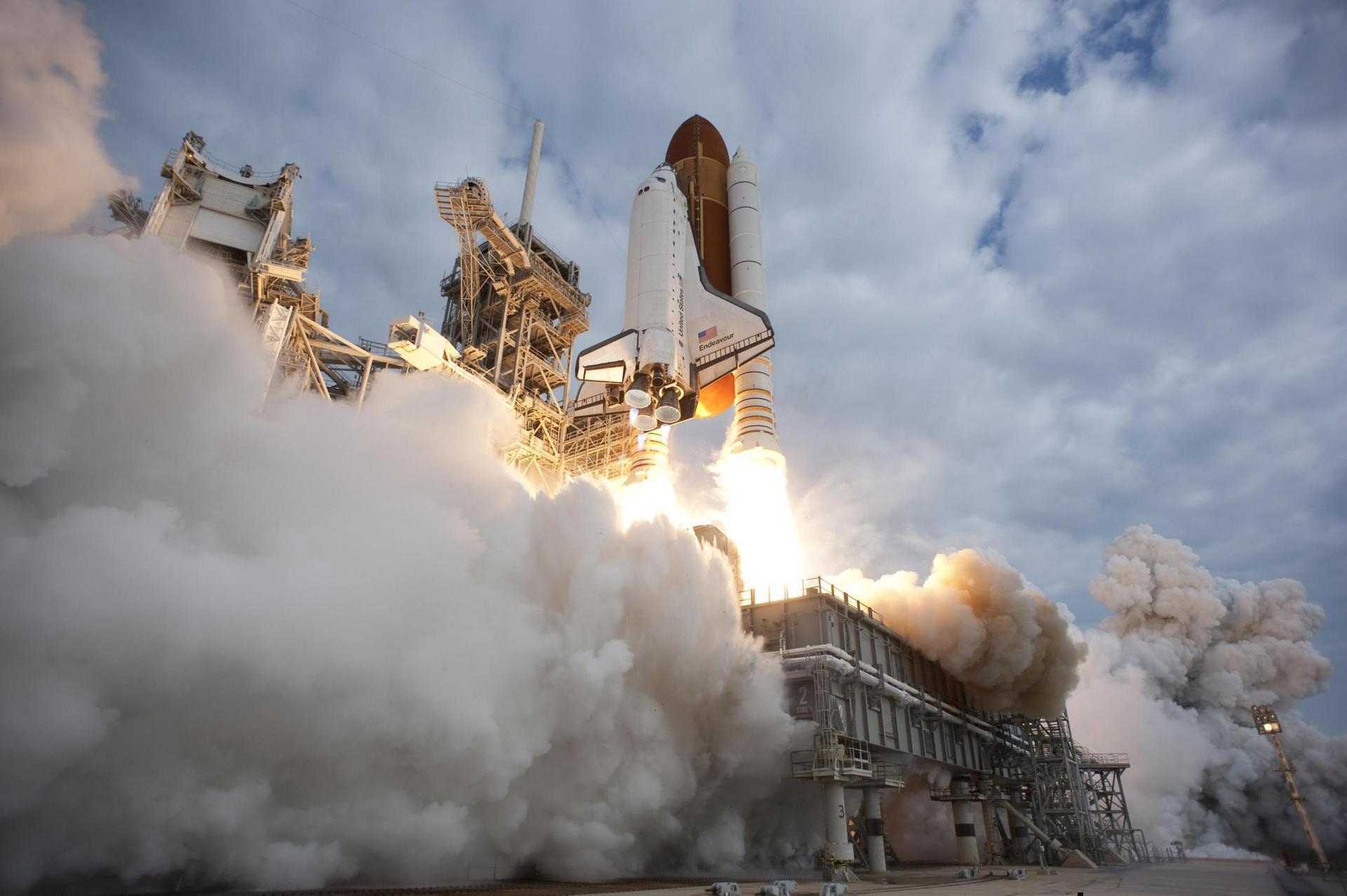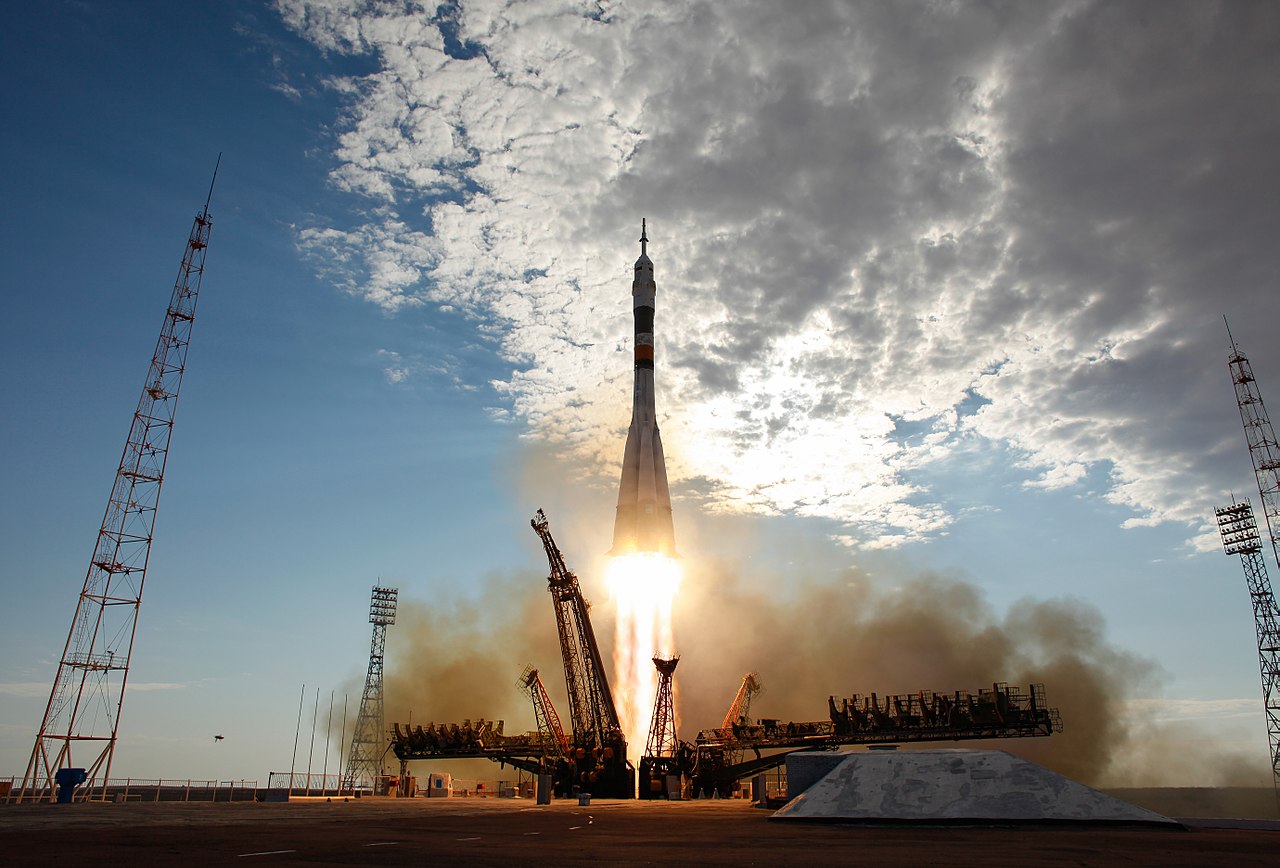Sergei Krikalev
Russian - (RFSA)
Retired
Date of Birth: Aug. 27, 1958
Age: 67
Sergei Konstantinovich Krikalev (Russian: Серге́й Константинович Крикалёв, also transliterated as Sergei Krikalyov; born August 27, 1958) is a Russian cosmonaut and mechanical engineer. As a prominent rocket scientist, he is a veteran of six space flights and ranks third to Gennady Padalka and Yuri Malenchenko for the amount of time in space: a total of 803 days, 9 hours, and 38 minutes.
Soyuz-U2 | Soyuz TM-7
Soviet Space Program | RussiaBaikonur Cosmodrome, Republic of Kazakhstan
Nov. 26, 1988, 3:49 p.m.
Status: Success
Mission:
Soyuz TM-7 was the seventh mission to Mir space station. The mission began on November 26, 1988, 15:49:34 UTC, launching Commander Alexander Volkov, Flight Engineer Sergei Krikalyov and Research Cosmonaut Jean-Loup Chrétien. They docked with Mir two days later, meeting with the resident crew. While Jean-Loup Chrétien returned 3 weeks later, two other cosmonauts were a part of the fourth long-duration expedition on Mir. During their stay there, cosmonauts performed an EVA and various experiments in biology, medicine, X-ray astronomy, technology etc. They also carried out sky surveys, spectrographic and topographic Earth observation experiments. Crew were visited by three Progress resupply spacecrafts. Jean-Loup Chrétien returned to Earth on December 21, 1988 in a Soyuz TM-6 spacecraft. The long-duration expedition crew returned on a Soyuz TM-7 spacecraft, landing safely back on Earth on April 27, 1989, 02:57:58 UTC.
Low Earth OrbitSoyuz-U2 | Soyuz TM-12
Soviet Space Program | RussiaBaikonur Cosmodrome, Republic of Kazakhstan
May 18, 1991, 12:50 p.m.
Status: Success
Mission:
Soyuz TM-12 was the 12th mission and the ninth long-duration expedition to Mir space station. The mission began on May 18, 1991, 12:50:28 UTC, launching Commander Anatoly Artsebarsky, Flight Engineer Sergei Krikalyov and Research Cosmonaut Helen Sharman, the first British cosmonaut, into orbit. They docked with Mir two days later. During their stay there, cosmonauts performed EVAs, various station repair and maintenance tasks, and carried out scientific experiments in biology, geophysics, space technology, astronomy etc. They were visited by several Progress resupply spacecrafts and welcomed aboard the Soyuz TM-13 crew. Helen Sharman returned on May 26, 1991, in Soyuz TM-11 spacecraft. While Sergei Krikalyov stayed on the station as a part of the next long-duration expedition, Anatoly Artsebarsky landed safely back on Earth on October 10, 1991, 04:12:18 UTC.
Low Earth OrbitSoyuz-U2 | Soyuz TM-13
Soviet Space Program | RussiaBaikonur Cosmodrome, Republic of Kazakhstan
Oct. 2, 1991, 5:59 a.m.
Status: Success
Mission:
Soyuz TM-13 was the 13th mission and the tenth long-duration expedition to Mir space station. The mission began on October 2, 1991, 05:59:38 UTC, launching Commander Alexander Volkov, Research Cosmonaut/Flight Engineer Toktar Aubakirov and Research Cosmonaut Franz Viehböck, the first Austrian cosmonaut, into orbit. They docked with Mir two days later. During their stay there, cosmonauts performed EVAs, various station repair and maintenance tasks, and carried out scientific experiments in biology, geophysics, space technology, astronomy etc. They were visited by several Progress resupply spacecrafts, and welcomed aboard the Soyuz TM-14 crew. The mission concluded with a safe landing back on Earth on March 25, 1992, 08:51:22 UTC.
Low Earth OrbitSpace Shuttle Discovery / OV-103 | STS-60
National Aeronautics and Space Administration | United States of AmericaKennedy Space Center, FL, USA
Feb. 3, 1994, 12:10 p.m.
Status: Success
Mission:
STS-60 was the first mission of the US/Russian Shuttle-Mir Program, which carried Sergei K. Krikalev, the first Russian cosmonaut to fly aboard a Space Shuttle. The mission used Space Shuttle Discovery, which lifted off from Launch Pad 39A on 3 February 1994 from Kennedy Space Center, Florida. The mission carried the Wake Shield Facility experiment and a SPACEHAB module into orbit, and carried out a live bi-directional audio and downlink link-up with the cosmonauts aboard the Russian space station Mir.
Low Earth OrbitSpace Shuttle Endeavour / OV-105 | STS-88
National Aeronautics and Space Administration | United States of AmericaKennedy Space Center, FL, USA
Dec. 4, 1998, 8:35 a.m.
Soyuz-U | Soyuz TM-31
Russian Federal Space Agency (ROSCOSMOS) | RussiaBaikonur Cosmodrome, Republic of Kazakhstan
Oct. 31, 2000, 7:52 a.m.
Status: Success
Mission:
Soyuz TM-31 began Expedition 1 by carrying 3 cosmonauts and astronauts to the International Space Station. Russian Commander, cosmonaut Yuri Gidzenko alongside Flight Engineer, Sergei Krikalev and Flight Engineer/Spaceflight Participant William Shepherd launched aboard the Soyuz spacecraft on October 31, 2000, 07:52:47 UTC. They docked with the station two days later. During their stay there, crew performed first maintenance and repair works, carried out first experiments and conducted several EVAs. They were also visited by several Progress resupply spacecrafts and STS-97 and STS-98 crews, and welcomed aboart STS-102 with the next expedition crew. Expedition 1 returned with STS-102, landing safely back on Earth on 21 March 2001, 07:33:06 UTC.
Low Earth OrbitSpace Shuttle Discovery / OV-103 | STS-102
National Aeronautics and Space Administration | United States of AmericaKennedy Space Center, FL, USA
March 8, 2001, 11:42 a.m.
Status: Success
Mission:
STS-102 was a Space Shuttle mission to the International Space Station (ISS) flown by Space Shuttle Discovery and launched from Kennedy Space Center, Florida. STS-102 flew in March 2001; its primary objectives were resupplying the ISS and rotating the Expedition 1 and Expedition 2 crews.
Low Earth OrbitSoyuz-FG | Soyuz TMA-6
Progress Rocket Space Center | RussiaBaikonur Cosmodrome, Republic of Kazakhstan
April 15, 2005, 12:46 a.m.
Status: Success
Mission:
Soyuz TMA-6 begins Expedition 11 by carrying 3 astronauts and cosmonauts to the International Space Station. Russian Commander, cosmonaut Sergei Krikalev alongside Flight Engineers, John Phillips (NASA) & Roberto Vittori (ESA) will launch aboard the Soyuz spacecraft from the Baikonur Cosmodrome in Kazakhstan and then rendezvous with the station. It landed on October 11, 2005, 01:09:00 UTC
Low Earth OrbitThe Roscosmos State Corporation for Space Activities, commonly known as Roscosmos, is the governmental body responsible for the space science program of the Russian Federation and general aerospace research. Soyuz has many launch locations the Russian sites are Baikonur, Plesetsk and Vostochny however Ariane also purchases the vehicle and launches it from French Guiana.
Falcon 9
Starlink Group 6-100
Space Launch Complex 40 - Cape Canaveral SFS, FL, USAA batch of 29 satellites for the Starlink mega-constellation - SpaceX's project for space-based Internet communication system.
Falcon 9
NROL-105
Space Launch Complex 4E - Vandenberg SFB, CA, USATwelfth batch of satellites for a reconnaissance satellite constellation built by SpaceX and Northrop Grumman for the National Reconnaissance Office …
Ceres-2
Demo Flight
Launch Area 95A - Jiuquan Satellite Launch Center, People's Republic of ChinaFirst test launch of Galactic Energy’s Ceres-2 rocket.
Long March 3B/E
Shijian 32
Launch Complex 2 (LC-2) - Xichang Satellite Launch Center, People's Republic of ChinaChinese experimental spacecraft of unknown purposes.
Ceres-1S
Tianqi 37-40
Rizhao offshore launch location - Haiyang Oriental Spaceport4 small satellites for LEO Internet of Things (IoT) communication purposes.






